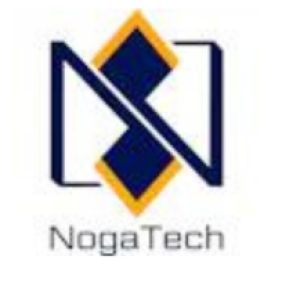Flutter enables cross-platform app developmentPosted by NogaTech IT Solutions LLC on June 22nd, 2022 Some people thought Flutter was a flash in the pan when it appeared on the mobile app development horizon. Flutter was a breakthrough framework that allowed developers to solve many of the problems they faced in mobile app development. Cross-platform apps face many problems, including not having access to the camera, microphones, and other device features. Flutter appeared to have the answers. Flutter is on the horizonTechnology faced its fair share of problems in the early days. For example, cross-platform apps were not optimal, and their maintenance was risky. Xamarin and Ionic were the most popular mobile development platforms of that time. React Native, which used web logic, could surpass these frameworks. Then Google introduced Flutter. Let's find out what made Flutter so successful. Component #1: One Codebase for All PlatformsFlutter, a cross-platform framework, allows for a single codebase that can be used on multiple operating systems. The interface will look the same on Android and iOS. Flutter's widgets are all widgets, and the code is presented as markup. Flutter developers can work with clients to create a focus group that will test the app's idea before proceeding with development. This allows them to play with the logic of the app dynamically. For example, developers can create a part of the functionality and test it with the focus group before returning to development with new directions. As a result, engineers can move quickly on the project by only changing one line of code for all operating systems. Component #2: Not affected by OS or Version UpdatesFlutter code has its rendering engine, allowing it to remain intact regardless of OS updates or system customizations. Version compatibility is another way. Flutter code promotes stability. This allows you to use old code in your upcoming apps. Component #3: Hot Reload allows for quick experimentation using codeHot reload is a Flutter feature that has gained much popularity with engineers. Hot reload allows developers to experiment quickly with code and create UIs. It also allows them to add features and fix bugs. Hot reload is performed by developers. They infuse updated source code files into the Dart virtual machine. This updates classes with new code components, such as fields and functions. Engineers can quickly see how their code changes have affected the appearance or functioning of the app. Component #4: Data IndependenceFlutter's BLoC architecture pattern (Business Logic Components) is based upon reactive programming. The architectural pattern allows for separating the app's user interface and data from data by using streams. It uses streams, structuring, and async techniques to prevent app performance delays. Animations and screen scrolls work flawlessly even though the server streams the data. BLoC pattern architecture is well-suited for apps with complex architectures and a lot of data. Component #5 - Implement UI/UX design for any complexityBecause there are no recursive functions during the layout processing, the number of Flutter objects nested in the Flutter code does not affect the performance or responsiveness of your app. The performance of native apps is usually affected by the number of compiled widgets. Flutter allows you to execute UI/UX designs of any complexity or stylization. Component #6 - Automated Memory StorageFlutter's cross-platform programming language, Dart, is object-oriented. It is strongly typed. Dart uses algorithms for determining the correctness and integrity of code. For example, the garbage collector mechanism automatically stores memory, meaning developers do not have to monitor it. Component #7: MultithreadingMultithreading allows engineers to find the best solutions for long-running tasks. This is done by the application running in the backend. Dart refers to threads as Isolates. Therefore, the code refers only to one primary isolate, the UI Thread. Component #8 - Compilation into native codeTo improve an app's functionality, developers can compile Dart in native code. For code compilation, engineers can choose to use either an 'Ahead of Time" or a 'Just in Time' approach. When engineers choose the 'Ahead of Time" approach to code compilation, Dart code will be compiled for ARM or x86 processors. The code can be dynamically compiled during runtime if they use the 'Just in Time" approach. Component #9: Libraries -Flutter's libraries are a powerful component. DarkPub is a very popular package manager for developers due to its many reusable packages and libraries. Engineers can maintain full control over the code and make adjustments even using an external library. Conclusion:Flutter is one of the leading cross-platform mobile technology platforms. It is supported by Google and offers a wealth of resources. Flutter is easy to use and simple to learn. It can be used to support small, medium, and large enterprises. Flutter is a framework that can be used to create non-standard interfaces or complex enterprise solutions quickly. Flutter is a solid framework for ensuring a smooth development process. It has a strong community with innovative solutions. This is an excellent tool for developers who want to create applications with flair. Author Bio: Like it? Share it! |


